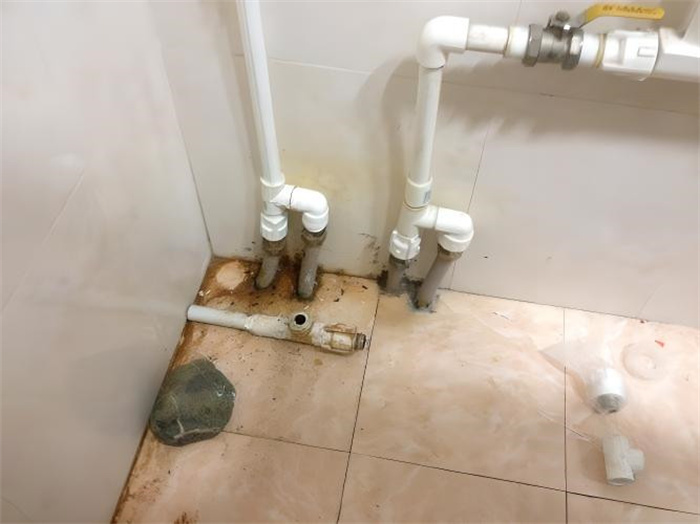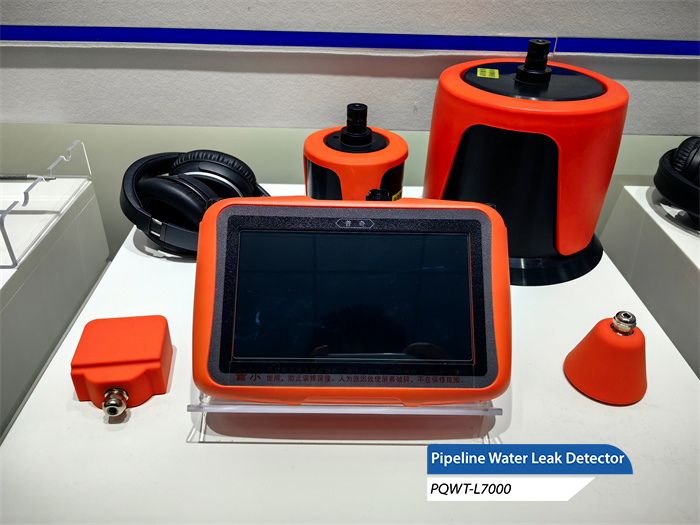Pipe leakage is a common problem in water supply systems, which not only leads to wastage of water, but also causes damage to the pipe itself and the surrounding facilities. Therefore, it is very important to detect and repair pipe leaks in time. In this paper, we will introduce the methods of pipe leakage detection and its importance.

First, the method of pipe leakage detection
1. Listening sound detection
Listening sound detection is a commonly used water leakage detection method, which is to pick up the sound of water leakage to determine the location of the leakage point. This method requires the use of tools such as a listening stick or a listening instrument, which is simple, low-cost and applicable to various types of pipelines. However, this method requires technicians to have certain experience and skills to accurately determine the location of the leak.
2. Pressure test
Pressure testing is a method of detecting water leaks by pressurizing pipes. In the pressure test, the technician will pressurize the pipe to a certain value and then observe the change of pressure. If there is a leak in the pipe, the pressure value will drop rapidly. By comparing the pressure changes, the location of the leak can be determined. The advantage of pressure testing is that it is simple to operate, highly accurate, and suitable for the inspection of large pipes and complex pipe networks. However, this method requires the use of specialized testing equipment and pressure pumps, the cost is high.
3. Infrared detection
Infrared detection is a method to detect water leakage through infrared imaging technology. In infrared detection, technicians use an infrared imager to scan the pipe and observe the infrared image of the pipe. If there is a leak in the pipe, the leak is displayed in the image in a highly visible form. The advantages of infrared inspection are high accuracy and simple operation, and it is suitable for the inspection of large pipes and complex pipe networks. However, this method requires the use of a professional infrared imager, which costs more.
Second, the importance of pipeline leakage detection
1. Ensure the safety of water supply
Pipe leakage can lead to water pollution, water pressure instability and other problems, which will seriously affect the safety of water supply. Timely detection and repair of pipeline leakage can protect the stability and safety of the water supply system.

2.Saving water resources
Pipe leakage can lead to waste of water resources, which not only increases the cost of water supply, but also has a negative impact on the environment. Timely detection and repair of pipeline leakage can save water resources, reduce water supply costs and improve economic efficiency.
3. Protect the environment
Water leakage also soaks and pollutes the soil, causing damage to the surrounding vegetation and buildings. Timely detection and repair of pipeline leakage can protect the environment and reduce the harm to the surrounding facilities.
3. Safeguard people's lives and property
Water leakage can lead to slippery and icy ground and other problems, posing safety hazards to pedestrians. Timely detection and repair of pipeline leakage can protect people's lives and property safety and reduce the occurrence of accidents.
In conclusion, pipe leakage detection is an important part of the water supply system. Through timely detection and repair of pipeline leakage, it can guarantee the important role of water supply safety, saving water resources, protecting the environment, and safeguarding people's lives and properties. Therefore, we should pay attention to the detection of pipeline leakage, strengthen the training and management of technicians, and improve the efficiency and quality of detection and repair.








